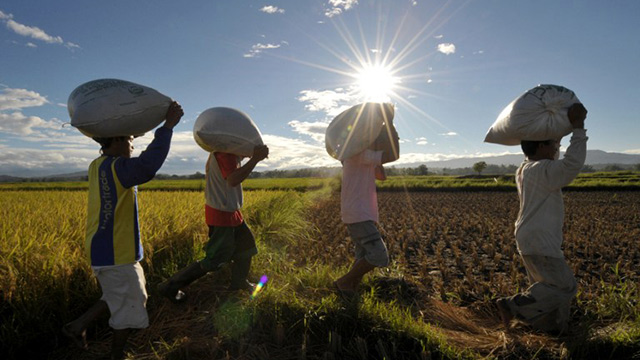SUMMARY
This is AI generated summarization, which may have errors. For context, always refer to the full article.

MANILA, Philippines – In a study that looked into the 2007-2012 food crisis, the Independent Evaluation Department of the Asian Development Bank (ADB) warned Asian countries not to be complacent.
In 2013, rice prices declined by 10%. This tapering down of prices showed prices could stabilize in the coming years.
But Asia – home to 67% of the world’s hungry people – should not be complacent.
The study, entitled Food Security Challenges in Asia, identified stagnating investment in agriculture – particularly in wheat and rice productivity – and the effects of climate change as major threats to food security.
“High volatility in food prices is likely unless there is a significant response from governments, development institutions, and the private sector to markedly increase agricultural productivity across Asia,” said Independent Evaluation’s director-general Vinod Thomas.
But Thomas also stressed that climate change remains the largest threat in years to come.
The Philippines is one of the most vulnerable to natural disasters in the world. The effects of climate change proved to be a real challenge.
Natural disasters cost the country millions of pesos in agricultural damage every year.
The declining prices of basic food grains such as rice, wheat, and corn began to spike in 2006, 2008, and mid-2012 with rice prices leading the hike.
Due to pests, droughts, and economic constraints, the majority of Asian farmers still rarely achieve more than 80% of potential yields.
But there is still room to raise agricultural productivity. The study points to the potential to raise crop productivity within the 4 major crop groups by harnessing existing technology in land and water use.
Solutions
Andrew Brubaker, one of the main authors of the study talked about the supply and demand challenges facing Asia.
“On the supply side are overexploited natural resources, including growing water scarcity, and the increasingly tangible impacts of climate change. On the demand side, Asia is becoming more urban and prosperous, which bring more diversified food requirements,” he said.
The solution lies in sustained investment in agriculture to adapt to the threats of climate change. Research shows that climate change affects agricultural systems much more dramatically than drought and floods.
“It is becoming increasingly evident that measures to adapt to climate change – first and foremost through the adaptation of farming systems and rural communities – will be fundamental to long-run efforts to ensure food security both at the national and household levels,” the study noted.
With the 2015 deadline of the Millennium Development goals fast approaching, and the progress Asia has shown in reducing hunger and poverty, the volatility of food prices is not only a threat but also creates an impetus for national and regional efforts to address the rising inequality.
There are still more than 900 million in the continent living in poverty, less than $1.25 a day.
The study cites providing incentives for raising productivity, safety nets for the poor, and predictable trade policies in order to safeguard food security in its recommendations. – Rappler.com
Add a comment
How does this make you feel?
There are no comments yet. Add your comment to start the conversation.